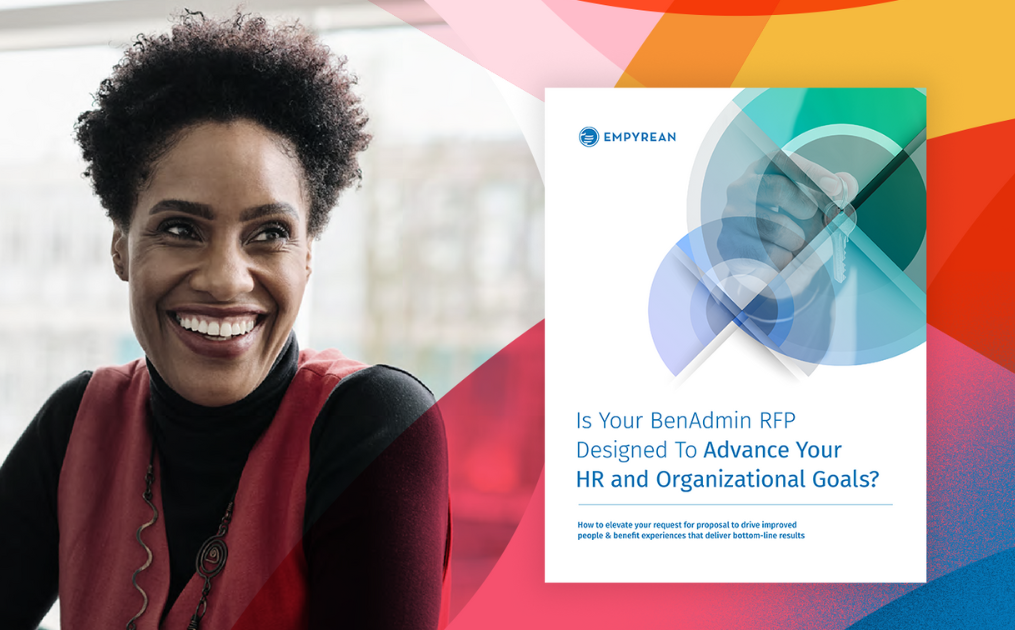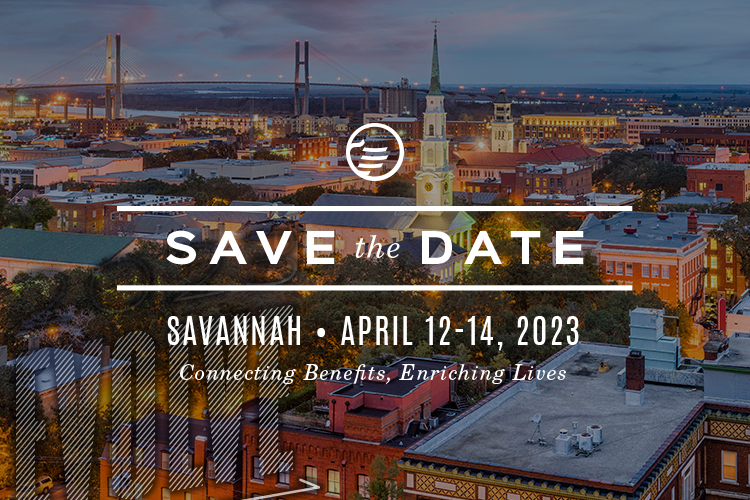Does Your WorkTech Stack Support Your DEIB Efforts?
20 July, 2023Why Workplace Accessibility is About So Much More than the ADA
When the Americans with Disabilities Act (ADA) was passed in 1990, it was a landmark civil rights law prohibiting discrimination “against individuals with disability in all areas of public life, including jobs, schools, transportation, and all public and private places that are open to the general public.” This included ensuring that people with disabilities – permanent and temporary – are given access to the same opportunities as everybody else through reasonable accommodations to a job or work environment.
While the ADA has set important standards for accommodating employees with disabilities, going beyond the ADA to create an inclusive workplace requires a shift in mindset from one of mere compliance to one of inclusivity and belonging. Building a truly inclusive workplace means considering more than just legal requirements, and fostering a workplace culture where people feel truly valued.
An inclusive workplace acknowledges and respects the entire spectrum of human abilities, recognizing that everyone brings unique strengths and perspectives to the table, regardless of physical ability, learning style, or sensory perception.
The positive organizational outcomes driven by diverse and inclusive organizations are well documented. In fact, 87 percent of the time diverse teams make better decisions than non-diverse teams, inclusive teams are shown to be over 35 percent more productive, and inclusivity is known to be a key aspect of a healthy workplace culture.
However, even if an organization is committed to its DEI efforts, if the technology it uses is not accessible, it limits its potential to create a fully inclusive workplace where all team members feel like they belong.
Tech Accessibility is Workplace Accessibility
The workplace has changed significantly in the 30 years since the ADA was signed into law. As reliance on technology continues to grow across U.S. workplaces, so too does the need to ensure that everyone can access and benefit from digital advancements.
According to a recent Gartner report, the average desk worker uses more than 11 applications each workday, up from just six in 2019. The pandemic also created a shift towards organizations expanding their WorkTech stack to include new collaboration, productivity, and HR tools. HR technologies that include self-service capabilities have also grown in popularity, including benefits administration technology.
The digitization of the modern workplace has dramatically shifted the way people work. As this evolution continues, ensuring the accessibility of workplace technology and the tech used to support employees becomes even more critical.
Tech accessibility is at the heart of workplace inclusivity. It ensures that individuals with disabilities can participate fully and meaningfully in all aspects of work. It also acknowledges the variety of ways that people interact with technology, be it due to physical disability, age-related limitations, or other factors like neurodiversity.
Empyrean’s User Experience Team is led by Belinda McCall, Director of UX, who has a clear and unwavering passion for ensuring that our technology is designed to be accessible to everyone, regardless of ability.
We sat down with Belinda to learn more about Empyrean’s approach to accessible tech, how and why it’s important, and the passions that drive her on her quest to ensure everyone can use the Empyrean platform to make better benefits decisions for themselves and their families.
Hi Belinda, we are excited to sit down with you today. To start, how do you define tech accessibility and what does it mean to you?
Thank you. I am excited to share my passion for accessibility and our approach to it here at Empyrean.
I have a holistic view of what it means for something to be accessible. For me, it’s about people being able to have an experience. That doesn’t mean that everyone has to have the exact same experience, because we all interact with the world differently. But everyone should be able to have an experience that allows them to complete a task or reach a goal. In other words, everyone must be able to participate in an experience.
Technology plays a significant role in our work lives. It helps us manage our tasks and enables us to communicate, collaborate, and create in incredibly efficient ways. If an employee cannot interact with their organization’s technology because it’s not designed with accessibility in mind, they are unable to participate, complete their job responsibilities, or reach their goals.
They will never be able to fully connect with their organization, or fully feel like they belong.
Why are you so passionate about creating user experiences that are accessible to everyone?
For me, accessibility is synonymous with inclusivity. We all want to feel like we are a valuable part of something and that we belong. The feeling of belonging, or not belonging, can have a tremendous impact on how one experiences the world.
As a deeply empathic child, and now adult, I always remember the feeling of being “the new kid in school.” The feeling of not belonging, of feeling forgotten or ignored, always stuck with me – that feeling that you’re not part of the group or not part of the community. It’s a terrible way to feel for any stretch of time as a child or an adult.
My goal is to remove any barrier that I can to ensure that the people who rely on Empyrean never feel forgotten, ignored, or like they don’t belong. Nobody should have to face any more difficulties than they’re already navigating.
Helping people feel like they belong goes way beyond digital accessibility and I feel lucky that I get to lead a team that makes sure each person using the Empyrean platform has a great experience and feels like they belong.
What shaped your passion for tech accessibility?
Earlier in my career, I supported the Computer/Electronic Accommodations Program (CAP) that was a part of the Department of Defense (DoD). The work I performed in this role opened my eyes to all the different ways people need technology to be accessible and how we play an important role in ensuring that accessibility.
CAP provides assistive technology (AT) and devices as reasonable accommodations (RA) to support individuals with disabilities and wounded, ill, and injured Service members throughout the Department of Defense in accessing information and communication technology.
As a part of my support to CAP, I worked with stakeholders and software engineers to manage the development and accessibility of their public-facing website and their internal request and procurement system. Additionally, every deliverable I created – every email, prototype, PDF, and document – all had to be accessible. The steps it took to ensure accessibility looked different for each deliverable provided.
My work took on a new meaning and the experience prompted significant and lasting shifts to my own behavior. One of the first things I learned was that my presentation style had to change. A great example of this was during one of my first stakeholder presentations, where one of the people in the room was unable to see and another was unable to hear.
I quickly realized that I needed to properly describe any visuals so that everyone in the room could follow. I needed to talk at a slower rate so that the sign language interpreter could translate what I was saying. Finally, I realized that I needed to present concepts in bite-sized chunks and pause to answer any questions before moving to the next concept or idea.
By presenting in this way, it made my presentation easier to comprehend for everyone, not just a few select stakeholders. Again, it comes down to making people feel like they belong and that they can actively participate. As the presenter, it was my responsibility to set that standard and uphold it. Everyone in that room needed to understand what I was presenting because their feedback and participation is valuable. People are valuable.
Additionally in that role, I learned about the technical aspects and laws related to accessibility such as web content accessibility guidelines (WCAG), the Americans with Disabilities Act (ADA), and Section 508 compliance. But underneath all those legal requirements – at the root of everything – what I was really learning was how to empower people to have a meaningful and positive experience regardless of their abilities.
Why should everyone care about accessibility?
I truly believe that an accessible work environment is better for everyone. Not only does having an accessible workplace signal that your employer cares about your well-being, but you truly never know when you yourself will benefit from it directly.
Accessibility isn’t only important for people with permanent disabilities, it’s for every person of every ability. When you design an experience with accessibility in mind from the beginning, it can create an improved experience for all of us.
When we think about disability, we oftentimes just think about permanent mental or physical limitations. But there are temporary disabilities, like injuries. For example, I had a recurring wrist injury years ago and was unable to use the hand that moves my computer mouse – that is a temporary disability where I benefited from tech accessibility.
There are also situational disabilities. Consider the new mother who has a sick baby crying loudly next to her, but today is the deadline for her to register for her health benefits. Her deadline is looming but she’s unsure of what benefits she needs, so she’s trying to watch a video that tells her what a certain benefit is or about the coverage it provides. If the video has closed caption capabilities it is accessible to her in her moment of need. And that matters.
How does Empyrean’s shared passion for tech accessibility set us apart?
Our commitment to building accessible experiences means that accessibility is at the forefront of our minds and not an afterthought.
Many organizations design things and then figure out how to make them accessible. Our team makes sure our platform is accessible from the start.
Designing with accessibility in mind is built in to our everyday processes. And that culture of inclusivity filters throughout the Empyrean organization to our developers, our designers, executive leadership, and everywhere else.
For us, technological innovation isn’t solely about creating new gadgets or systems—it’s also about enabling more people to use them.
Our UX team is also constantly learning and advancing our skill sets. We are all enrolled in online coursework at Deque University, which specializes in training in every area of digital accessibility.
We’ve come a long way to recognize the different types of accommodations someone might need – whether it be at home, in the classroom, or at work. We keep all categories and types of disabilities in mind when we are designing Empyrean’s user experience.
In addition to our developers following best practices for writing accessible code, we frequently consider the wording or instructions we provide on screen. We know that in this country there is already a knowledge gap when it comes to employee benefits, so we take care to be as concise and clear as possible with our language.
Some of the other aspects of design we consider are font, icon, and component styles that are all tied to a design system created with accessibility in mind.
We are proud that we play such an important role in building positive people and benefit experiences that help everyone – regardless of their abilities – thrive and succeed in the workplace.
By actively creating a more inclusive workplace, we not only help those with disabilities to thrive, but we also foster a healthier, more creative, and more productive environment for all. In the end, a truly inclusive workplace isn’t just about compliance – it’s about demonstrating our commitment to dignity, respect, and equity for all.
Editor’s Note: Belinda’s passion for tech accessibility extends beyond the Empyrean platform. She will also be leading the charge in ensuring the accessibility of all Empyrean market-facing assets, including the upcoming redesign of the Empyrean corporate website.



